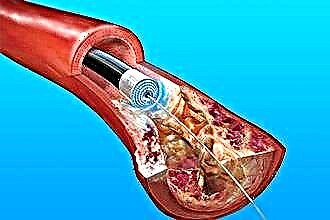What kind of assistance is provided to a patient in intensive care?
A patient whose ambulance is diagnosed with acute coronary syndrome is immediately taken to the intensive care unit. Often in large cardiology clinics there are separate specialized infarction intensive care units.
Resuscitation in case of a heart attack primarily consists in providing the damaged heart muscle with oxygen, stopping the developed life-threatening arrhythmias, correcting hemodynamic disturbances and thrombus formation.
For this, the following procedures are used:
- oxygen therapy - the patient is connected to a ventilator to combat hypoxia;
- infusion therapy - indicated to restore normal tissue blood supply, water and electrolyte balance, is used to provide parenteral (intravenous) nutrition;
- sedation - with a heart attack, it is very important to calm the patient's nervous system, for which appropriate drugs are used;
- anesthesia - ischemia of the heart muscle is accompanied by intense pain, which can lead to the development of shock, therefore, it is relieved with the help of narcotic analgesics;
- prevention of thrombus formation or dissolution of the formed thrombus - it is very important to prevent a repeated attack or to provide oxygen access to the ischemic area, for which anticoagulants are prescribed, such as heparin or warfarin;
- strict bed rest is necessary to minimize physical activity and restore the body.
While in intensive care, the patient can be treated surgically:
 stenting of the coronary arteries;
stenting of the coronary arteries;- coronary artery bypass grafting;
- laser angioplasty;
- balloon dilatation of coronary vessels.
Patients are in intensive care after a heart attack under the constant supervision of medical personnel. They are connected around the clock to equipment that automatically records an ECG, monitors blood pressure, breathing, heart rate and other indicators. If the patient develops clinical death, he urgently undergoes cardiopulmonary resuscitation, which consists in the following actions:
- indirect heart massage;
- artificial ventilation of the lungs;
- defibrillation;
- medical support for the patient.
The duration of the patient's stay in intensive care after a heart attack
In modern medicine, they are trying to reduce the time a patient is in the hospital in order to optimize costs and reduce the cost of treatment. If earlier a patient with a heart attack could stay in the hospital for almost a month, now this period has been significantly reduced.
With an uncomplicated course of the disease, the patient is in intensive care for an average of three days. During this time, a complete standard examination is carried out, vital signs are stabilized and appropriate treatment is prescribed. In most cases, it becomes necessary to perform a surgical intervention. In such a situation, the duration of the patient's stay in the intensive care unit is supplemented by the pre- and postoperative period. But the total period usually does not exceed 7-10 days.
After that, the patient is transferred to a cardiological hospital or discharged home.
What determines the length of stay of a person in the intensive care unit?
The time during which the patient is kept in intensive care after a heart attack is determined by the following factors:
- localization and size of ischemic necrosis;
- the presence of complications (shock, reperfusion syndrome, coma);
- the presence of concomitant diseases (hypertension, diabetes mellitus);
- the age of the patient and his general condition;
- the volume of surgical intervention.
The combination of these circumstances creates a wide time frame: some are discharged after a week, others are kept for a month or more. It is necessary to understand that patients with coronary artery disease always have a high risk of repeated heart attacks, therefore, you should follow the doctor's instructions exactly and do not stop the treatment process ahead of time.
A person is discharged if there are such criteria:
- restoration of normal heart rate;
- absence of life-threatening complications;
- absence of disturbances of consciousness.
As well as the length of hospital stay, the time to bed rest after discharge has been significantly reduced. It has been found that prolonged recumbency increases the risk of complications such as thrombosis, embolism, and pressure ulcers. In most cases, patients can walk fully within 3–4 weeks of the acute episode.
After discharge, the rehabilitation stage begins, which lasts several months (up to a year) and plays a very important role in the further prognosis for the patient.
Duration of sick leave for myocardial infarction
After discharge, the patient is given a sick leave, which is drawn up by the attending physician. If it is necessary to extend its validity, a special medical commission is appointed. The specific duration of a sick leave for disability after a heart attack depends on the severity of the pathology:
- small focal infarction without complications - 60 days;
- extensive large-focal and transmural - 60-90 days;
- complicated heart attack - 3-4 months.
In the presence of the following conditions, the patient is sent to a medical and rehabilitation expert commission to determine the fact of persistent disability:
- repeated (recurrent) heart attack;
- the presence of severe cardiac arrhythmias;
- chronic heart failure.
The commission determines the severity of the patient's condition and assigns it to one of the functional classes. Depending on the class, doctors decide the further fate of the patient - to extend his sick leave, or to give him a disability group.
There are four functional classes:
- I - the ability to work is preserved, but patients are removed from night shifts, additional loads, and business trips. In this case, it is recommended to change heavy physical work to lighter;
- II - only light work is allowed, without significant physical exertion;
- ІІІ - patients are recognized as disabled if their activities are associated with physical work or psycho-emotional stress;
- IV - patients are considered absolutely incapacitated, they are given a disability group.
Further rehabilitation
Heart attack is not a diagnosis, but a way of life. After the patient leaves the hospital bed, he will have a long period of rehabilitation, during which he will restore health and performance.
A specific program is prescribed by a cardiologist and a physiotherapist. In addition to drug therapy, it includes:
- Spa treatment;
- physiotherapy exercises - in accordance with the functional class of the disease;
- diet and weight control - refusal of flour and fatty foods, fractional meals;
- quitting smoking and alcohol, which can significantly reduce the risk of relapse;
- avoiding stress, including conducting psychological training or meditation;
- constant self-monitoring of pressure and pulse.
It is also periodically necessary to undergo preventive examinations according to the following scheme:
- first month - every week;
- the first six months - every two weeks;
- the next six months - once a month;
- thereafter - once a quarter.
Conclusions
Myocardial infarction is a dangerous emergency that requires urgent action to save lives.The earlier resuscitation measures are started, the greater the chances of a successful recovery.
During the first three to seven days, the patient is placed in the anesthesiology and intensive care unit, where there are all the necessary conditions for maintaining life and treating the early stages of a heart attack. In the future, the patient is transferred to a cardiological hospital. The timing of discharge from the intensive care unit depends on the specific situation. The length of the sick leave also varies according to the severity of each individual patient.

 stenting of the coronary arteries;
stenting of the coronary arteries;

